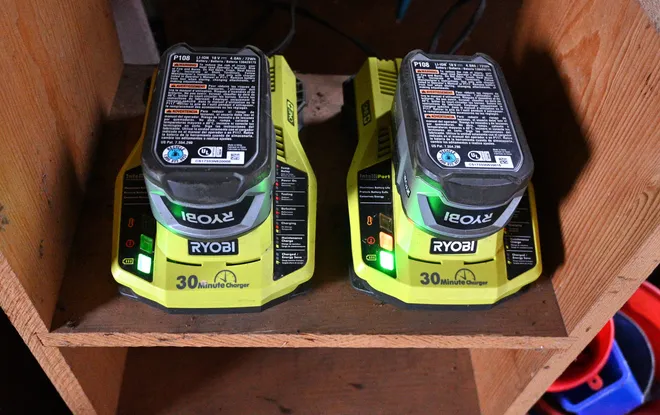
BRANCH COUNTY — Coldwater Fire Marshal Steve Trall believes lithium-ion batteries started two major fires in the county since Feb. 1.
A charging lithium-ion portable power tool in the Elmwood Apartment maintenance room is the suspected fire source that severely damaged the 23-unit Taylor Street building.
Trall suspected charging lithium-ion batteries in a Farrand Road pole barn on March 28, caused the fire that destroyed the building and its contents.
Trall said lithium-ion batteries are safe if used and handled correctly. “Damaged or unstable batteries and improper charging, storage or disposal can cause the batteries to overheat,” he said.
The Fire Marshal said the danger can be prevented by following the manufacturer’s recommendations for use, care, and storage. The instructions and warnings come with batteries and tools.
The danger of these batteries used in everyday devices like cellphones, computers, and hundreds of portable devices is that lithium-ion batteries can catch fire or fail due to thermal runaway.
This process can occur within the battery if it becomes too hot, and it causes a chain reaction that can ultimately lead to a fire.
Several factors can trigger thermal runaway in lithium-ion batteries:
- When a lithium-ion battery is overcharged, gas can build up inside the cell, increasing pressure and generating heat.
- Over-discharging a lithium-ion battery can cause its voltage to drop too low, forming metallic lithium within the cell. This can cause internal short circuits and trigger thermal runaway.
- Physical damage to the battery, such as puncturing or crushing, can compromise the integrity of the cell’s components, leading to internal short circuits and thermal runaway.
- Poorly manufactured lithium-ion batteries may have defects in their design or construction that make them more prone to thermal runaway.
- Exposure to high temperatures can also initiate thermal runaway, as elevated temperatures can increase the rate of chemical reactions within the battery.
Trall points out that temperature limits are listed for each type of battery.
Another common mistake is using the wrong battery in a tool or the wrong charger. Manufacturers design tools, batteries, and chargers to work together.
Trall warns, “Despite these precautions, thermal runaway incidents can still occur, especially if batteries are misused or damaged. Therefore, proper handling, storage, and charging practices are essential to minimize the risk of thermal runaway in lithium-ion batteries.”
A common mistake in storage is putting batteries around metals, nails, or anything metallic. These can touch battery terminals, short out the batteries, and lead to thermal runaway.
As cars, trucks, grid power storage, and almost every new electric device depend on lithium-ion batteries, these fires are expected to increase.
No current national data on lithium-ion battery fires exists. However, the Department of Homeland Security began collecting data on them this year.
Congressional hearings in February reported that in 2023, the Fire Department of New York responded to 267 lithium-ion battery fires, which caused 150 injuries and 18 deaths.


























